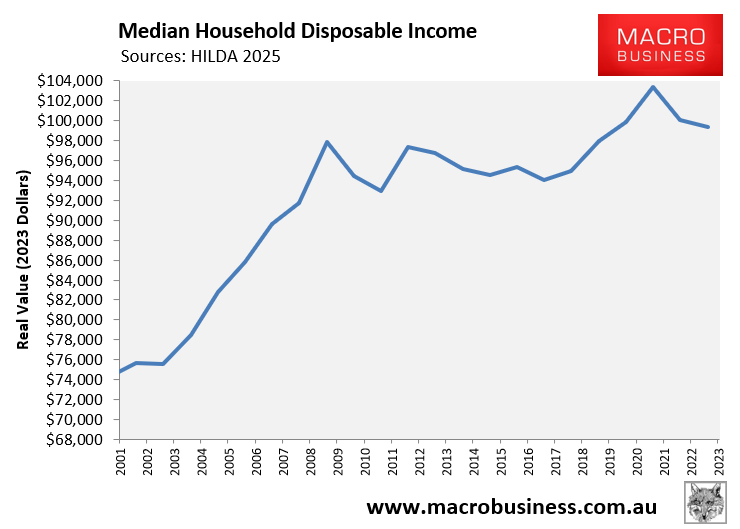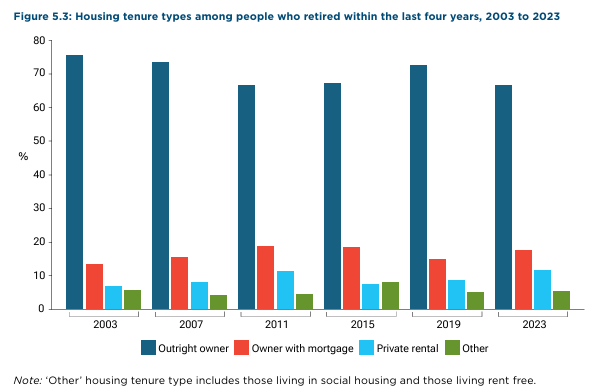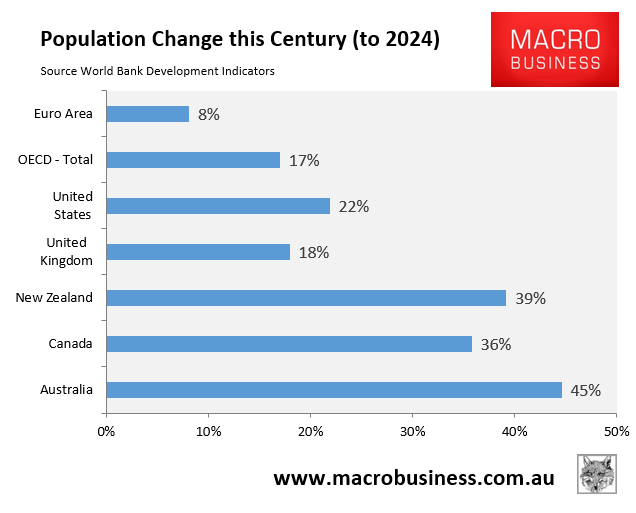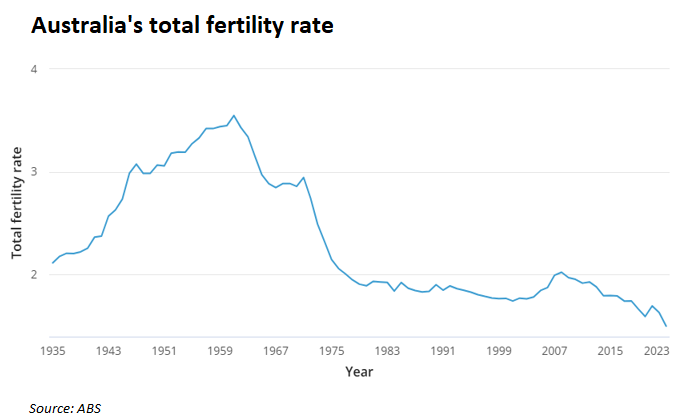The University of Melbourne’s latest Household, Income and Labour Dynamics in Australia (HILDA) survey has found that households have less disposable income than they did before the pandemic.
The survey found that mean annual household disposable income has dropped below 2020 levels to $116,432. Households are also spending far more on childcare, rent, and mortgage payments than they did two decades ago.
Median household disposable income is slightly better, falling to around 2020 levels and has barely increased since 2009.

The survey found that factoring in inflation, households in 2023 spent an average of 40.5% more on rent than in 2006. As a result, the survey found that almost a quarter of retirees could be renters by 2043, up from 12% in 2023 and 6% in 2003.

Dr Kyle Peyton, a senior research fellow at the Melbourne Institute of Applied Economic and Social Research, told The Australian that Australia is simply not building enough homes to keep pace with the nation’s world-leading population growth.

“As a country we’re not prepared for what’s coming”, Peyton said. “We’re not building enough homes to keep up with population growth, and we haven’t been doing that for many years”.
“We need to build more homes. We’re currently building … 170,000 homes (a year). That’s frankly pathetic. We’re never going to get out of this situation if that’s all we can do”.
“You’ve got to make it legal to build things. We need to have a conversation about how much we really value the derelict pub down the road with a heritage overlay”, he said.
As usual, there was no mention by Peyton of Australia’s excessive immigration program, which is the sole driver of Australia’s population growth given that the nation’s fertility rate is well below replacement.

The fundamental reason why Australia has not built enough homes and is suffering from a chronic rental crisis is because policymakers have chosen to grow the population aggressively via net overseas migration.
Doing so has meant that the demand for housing has grown faster than the supply of housing.
Therefore, the first best solution to Australia’s rental crisis is to ensure that the population grows at a slower rate than the nation’s capacity to build housing and infrastructure.
Why is it that Australian academics with PhD’s, like Dr Kyle Peyton, do not understand Economics 101—basic supply and demand?
If we are not building enough homes to keep up with extreme levels of population growth, then the easiest, fastest, and most sensible solution is to slow population growth by moderating immigration. It is basic economics and common sense.

